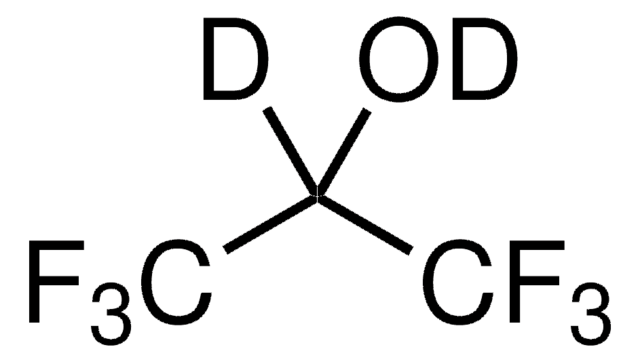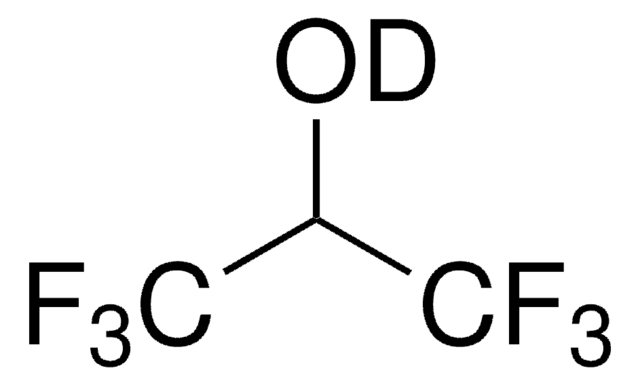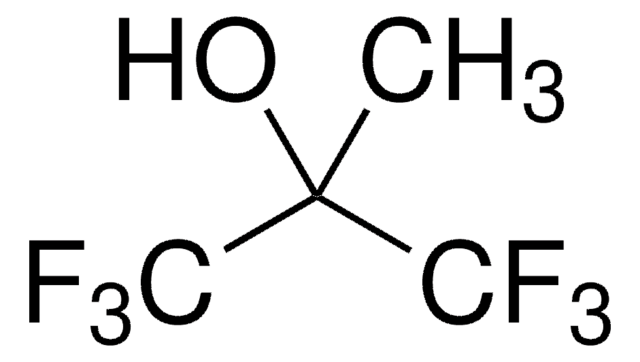52517
1,1,1,3,3,3-Hexafluoro-2-propanol
for GC derivatization, LiChropur™, ≥99.8%
Synonyme(s) :
HFP, Hexafluoroisopropanol
About This Item
Produits recommandés
Qualité
for GC derivatization
LiChropur™
Niveau de qualité
Pureté
≥99.8% (GC)
≥99.8%
Pertinence de la réaction
reagent type: derivatization reagent
reaction type: Acylations
reagent type: derivatization reagent
reaction type: Esterifications
Technique(s)
gas chromatography (GC): suitable
Indice de réfraction
n20/D 1.275 (lit.)
Point d'ébullition
59 °C (lit.)
Pf
−4 °C (lit.)
Densité
1.596 g/mL at 25 °C (lit.)
Chaîne SMILES
OC(C(F)(F)F)C(F)(F)F
InChI
1S/C3H2F6O/c4-2(5,6)1(10)3(7,8)9/h1,10H
Clé InChI
BYEAHWXPCBROCE-UHFFFAOYSA-N
Vous recherchez des produits similaires ? Visite Guide de comparaison des produits
Catégories apparentées
Description générale
Application
Autres remarques
Informations légales
Mention d'avertissement
Danger
Mentions de danger
Classification des risques
Eye Dam. 1 - Repr. 2 - Skin Corr. 1A - STOT RE 2
Code de la classe de stockage
8A - Combustible corrosive hazardous materials
Classe de danger pour l'eau (WGK)
WGK 2
Point d'éclair (°F)
No data available
Point d'éclair (°C)
No data available
Équipement de protection individuelle
Faceshields, Gloves, Goggles
Faites votre choix parmi les versions les plus récentes :
Déjà en possession de ce produit ?
Retrouvez la documentation relative aux produits que vous avez récemment achetés dans la Bibliothèque de documents.
Les clients ont également consulté
Notre équipe de scientifiques dispose d'une expérience dans tous les secteurs de la recherche, notamment en sciences de la vie, science des matériaux, synthèse chimique, chromatographie, analyse et dans de nombreux autres domaines..
Contacter notre Service technique












